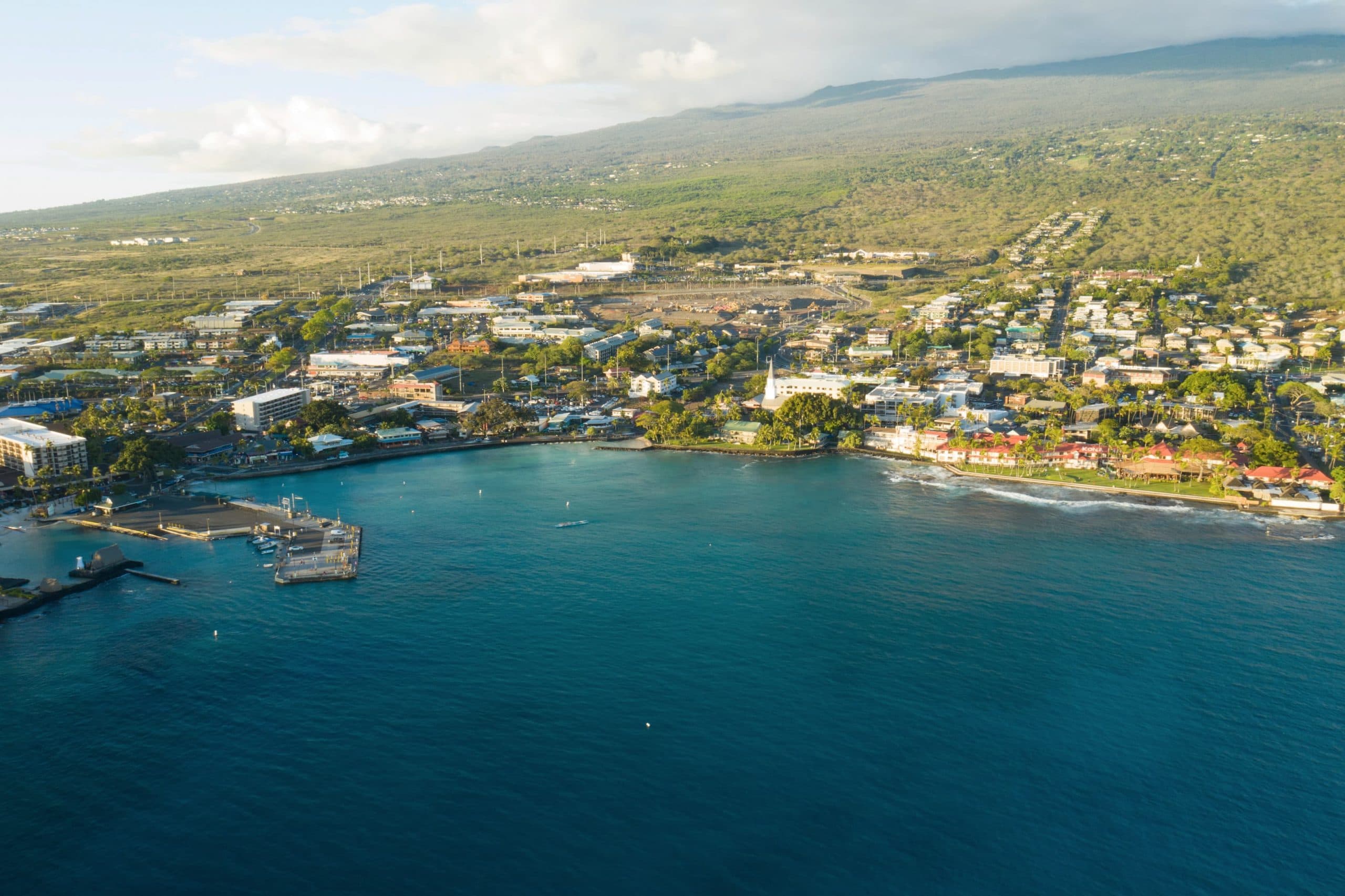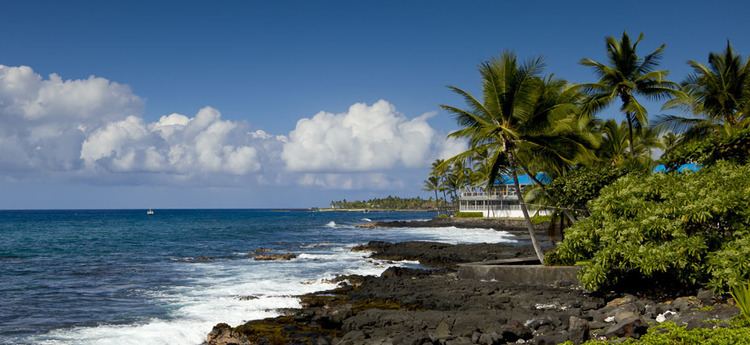Kona Island

Kona Island, a captivating gem nestled in the heart of the Pacific Ocean, is a paradise that beckons travelers with its mesmerizing beauty and rich cultural heritage. This volcanic island, a testament to the Earth’s raw power, boasts a tapestry of diverse landscapes, from sun-drenched beaches to verdant rainforests, making it a destination that caters to every wanderlust.
The Island’s Volcanic Origins
Kona Island’s dramatic landscape is a product of its fiery past. The island was formed over millions of years through a series of volcanic eruptions, with five major shield volcanoes contributing to its unique topography. The most prominent among these is Mauna Loa, the world’s largest active volcano, which rises majestically from the ocean floor. These volcanic eruptions have shaped the island’s terrain, giving rise to dramatic cliffs, rolling hills, and fertile valleys.
A Tapestry of Diverse Landscapes
The island’s diverse landscapes are a testament to its volcanic origins and varied microclimates. The western side of Kona Island is characterized by arid, sunny conditions, with lava fields and volcanic black sand beaches. In contrast, the eastern side of the island is lush and verdant, with rainforests, waterfalls, and fertile agricultural land. The island’s interior is home to rugged volcanic mountains, including Mauna Kea, the highest peak in Hawaii.
The Rich History of Kona Island
Kona Island has a rich and fascinating history, deeply intertwined with its indigenous people, the Hawaiians. The island was first settled by Polynesian voyagers around 1,500 years ago. These early settlers brought with them their unique culture, language, and traditions, which have been passed down through generations.
The Legacy of Ancient Hawaiians
The ancient Hawaiians developed a sophisticated agricultural system, cultivating taro, sweet potatoes, and other crops. They also mastered the art of fishing and navigation, using traditional canoes to explore the vast Pacific Ocean. Their culture was deeply connected to the land and sea, and they revered the gods and spirits that they believed inhabited the natural world.
A Crossroads of History, Kona island
Kona Island played a significant role in the history of Hawaii. The island was a center of trade and commerce, and it was home to several important chiefs and rulers. In the 18th century, Captain James Cook, the famous British explorer, landed on Kona Island, marking the beginning of Western contact with Hawaii.
The Island’s Tropical Climate
Kona Island enjoys a tropical climate, characterized by warm temperatures and abundant sunshine year-round. The island’s location on the western side of the Big Island, in the rain shadow of the Kohala Mountains, creates a dry and sunny microclimate.
Distinct Microclimates
While Kona Island is known for its sunny weather, it also experiences distinct microclimates depending on elevation and location. The higher elevations of Mauna Kea and Mauna Loa experience cooler temperatures and occasional snowfall. The windward side of the island, facing the trade winds, receives more rainfall than the leeward side.
Exploring Kona’s Natural Wonders: Kona Island

Kona Island is not only a paradise for sun-seekers but also a treasure trove of natural wonders that captivate the senses. From the aromatic coffee plantations to the vibrant marine life teeming in its waters, Kona offers a unique blend of cultural heritage and breathtaking landscapes.
Kona Coffee: A Taste of Paradise
Kona coffee is renowned worldwide for its exceptional flavor and aroma. Grown on the slopes of the Hualalai volcano, these beans are nurtured by the rich volcanic soil and the island’s unique microclimate. The coffee cultivation in Kona follows sustainable practices, ensuring the quality and longevity of this prized crop.
- Cultivation Methods: Kona coffee farmers employ traditional methods, including hand-picking the ripe cherries and sun-drying them to perfection. This meticulous process ensures the beans retain their natural sweetness and complexity.
- Varieties: The most common Kona coffee variety is the Typica, known for its delicate floral notes and bright acidity. Other varieties include the Bourbon, with its chocolatey undertones, and the Caturra, offering a balanced blend of sweetness and acidity.
- Flavor Profile: Kona coffee boasts a unique flavor profile that is characterized by its smooth, rich body, complex aromas, and hints of chocolate, caramel, and nuts. The high elevation and volcanic soil contribute to the coffee’s distinct flavor, making it a truly special treat.
Marine Life and Underwater Adventures
The waters surrounding Kona Island are a haven for marine life, offering a glimpse into the vibrant underwater world. The warm, clear waters are home to a diverse array of fish species, colorful coral reefs, and fascinating marine mammals.
- Coral Reefs: The Kona coast is blessed with thriving coral reefs, providing a sanctuary for a multitude of fish species. The vibrant colors and intricate formations of the reefs create a breathtaking underwater spectacle.
- Fish Species: From the playful humphead wrasse to the majestic manta rays, the waters around Kona are teeming with diverse fish species. Snorkelers and divers can encounter colorful angelfish, graceful butterflyfish, and the elusive sea turtles.
- Snorkeling and Diving: Kona offers unparalleled opportunities for snorkeling and diving, allowing visitors to experience the wonders of the underwater world firsthand. Explore the shallow reefs, encounter playful sea life, and marvel at the beauty of the coral formations.
Mauna Kea Observatories: Unveiling the Cosmos
Perched atop Mauna Kea, a dormant volcano, the Mauna Kea Observatories are a testament to humanity’s pursuit of knowledge. These world-renowned observatories offer a glimpse into the vastness of the universe and have made significant contributions to our understanding of the cosmos.
- Scientific Contributions: The observatories have played a pivotal role in advancing our knowledge of astronomy, cosmology, and astrophysics. They have enabled scientists to study distant galaxies, explore the formation of stars and planets, and search for signs of life beyond Earth.
- Breathtaking Views: The observatories offer breathtaking views of the night sky, with the Milky Way stretching across the horizon. Visitors can witness the celestial beauty of the universe in its purest form, creating a truly awe-inspiring experience.
Kona’s Cultural Tapestry

Kona Island, nestled within the embrace of the Pacific Ocean, boasts a rich cultural heritage that resonates through the vibrant traditions and practices of the native Hawaiian people. From their captivating language and melodic music to their expressive dance forms and intricate art, Kona’s cultural tapestry weaves together a story of resilience, connection to nature, and the enduring spirit of aloha.
The Language of Aloha
The Hawaiian language, ʻŌlelo Hawaiʻi, is a cornerstone of Hawaiian culture, embodying a deep connection to the land, the ocean, and the ancestors. Its unique sounds and grammatical structure reflect the island’s environment and the values of its people. The language is characterized by its melodic flow, with vowel sounds taking precedence over consonants. This emphasis on vowels creates a sense of fluidity and harmony, mirroring the natural rhythms of the islands.
The Rhythms of Music and Dance
Hawaiian music, with its enchanting melodies and rhythmic patterns, serves as a powerful expression of cultural identity. The ukulele, a small four-stringed instrument, is an integral part of Hawaiian music, its gentle strumming creating a soothing ambiance. Traditional chants, known as mele, are passed down through generations, recounting stories of history, mythology, and ancestral wisdom. Hawaiian dance, known as hula, is a captivating art form that tells stories through graceful movements and expressive gestures. There are numerous styles of hula, each with its own unique character and purpose. The hula kahiko, for example, is a traditional form that honors the gods and ancestors, while the hula auana is a more modern style that incorporates Western influences.
The Art of Storytelling
Hawaiian art is a vibrant expression of the island’s natural beauty and cultural heritage. Traditional crafts, such as weaving, carving, and featherwork, showcase the artistic skills and ingenuity of the Hawaiian people. The intricate patterns and designs found in Hawaiian art often depict flora and fauna, reflecting the island’s rich biodiversity. The art of storytelling is also deeply ingrained in Hawaiian culture. Legends and myths, passed down through generations, offer insights into the beliefs, values, and history of the Hawaiian people. These stories are often woven into the fabric of everyday life, serving as reminders of the island’s past and the importance of preserving its cultural heritage.
North Kona vs. South Kona: A Cultural Contrast
The North and South Kona regions of the island offer distinct cultural experiences, reflecting their geographical and historical differences. North Kona, known for its rugged coastline and lush forests, is home to the historic coffee plantations and the vibrant town of Kailua-Kona. The region’s cultural landscape is shaped by its agricultural heritage, with coffee being a prominent part of the local economy and identity. South Kona, characterized by its volcanic terrain and secluded beaches, boasts a more traditional and laid-back atmosphere. The region is home to numerous historical sites, including the Puʻuhonua o Honaunau National Historical Park, a place of refuge for those who broke the kapu (sacred laws). South Kona is also known for its strong sense of community and its deep connection to the land and the ocean.
Kona Island is a paradise for those seeking sun, sand, and stunning ocean views. If you’re planning a trip to this Hawaiian gem, consider checking out the alaska airlines bogo deals to help you save on your flights. With their special offers, you can stretch your travel budget further and enjoy more time exploring the captivating beauty of Kona Island.
Kona Island is a paradise for those seeking a tropical escape, with its stunning beaches, lush rainforests, and volcanic landscapes. If you’re planning a trip from New York, you’ll likely be flying with Alaska Airlines, and you might wonder, “what terminal is Alaska Airlines at JFK?” You can find the answer to this question by checking out this helpful resource: what terminal is alaska airlines at jfk.
Once you’ve got that sorted, you’ll be on your way to experiencing the magic of Kona Island.
